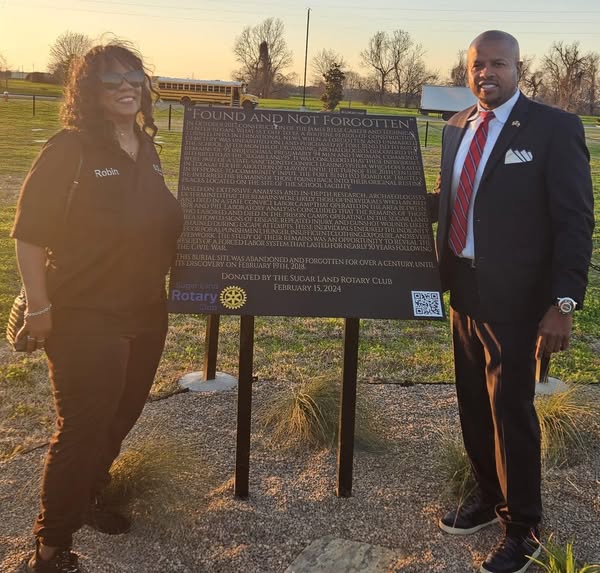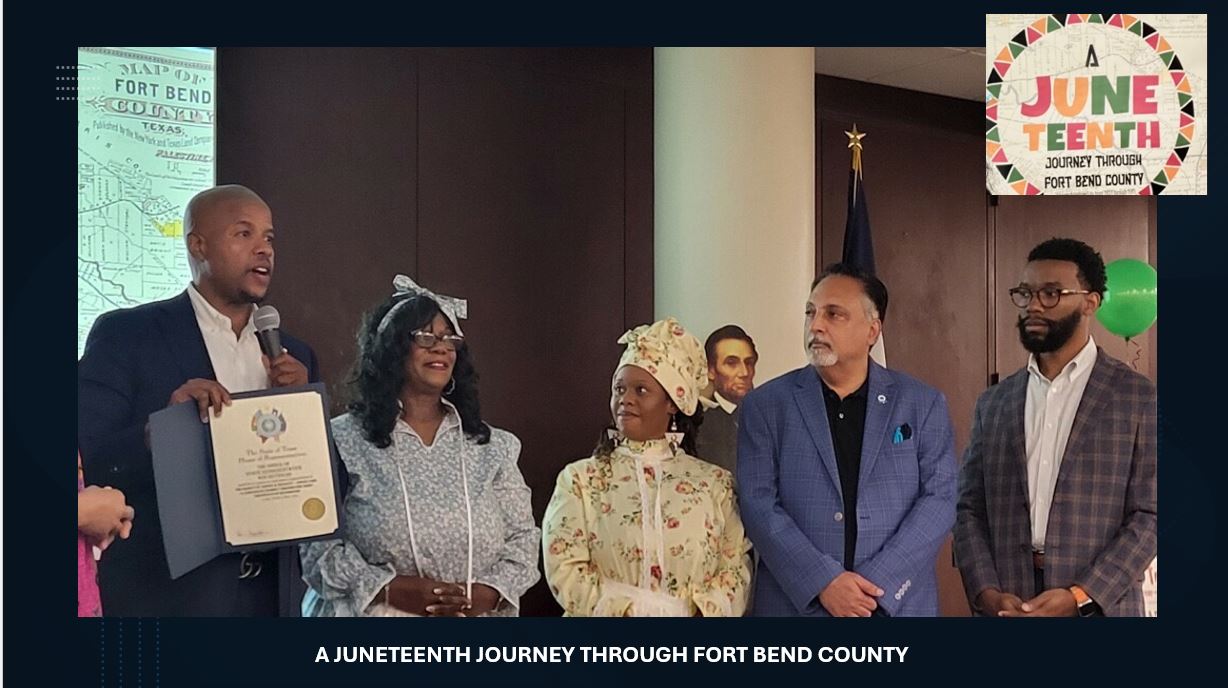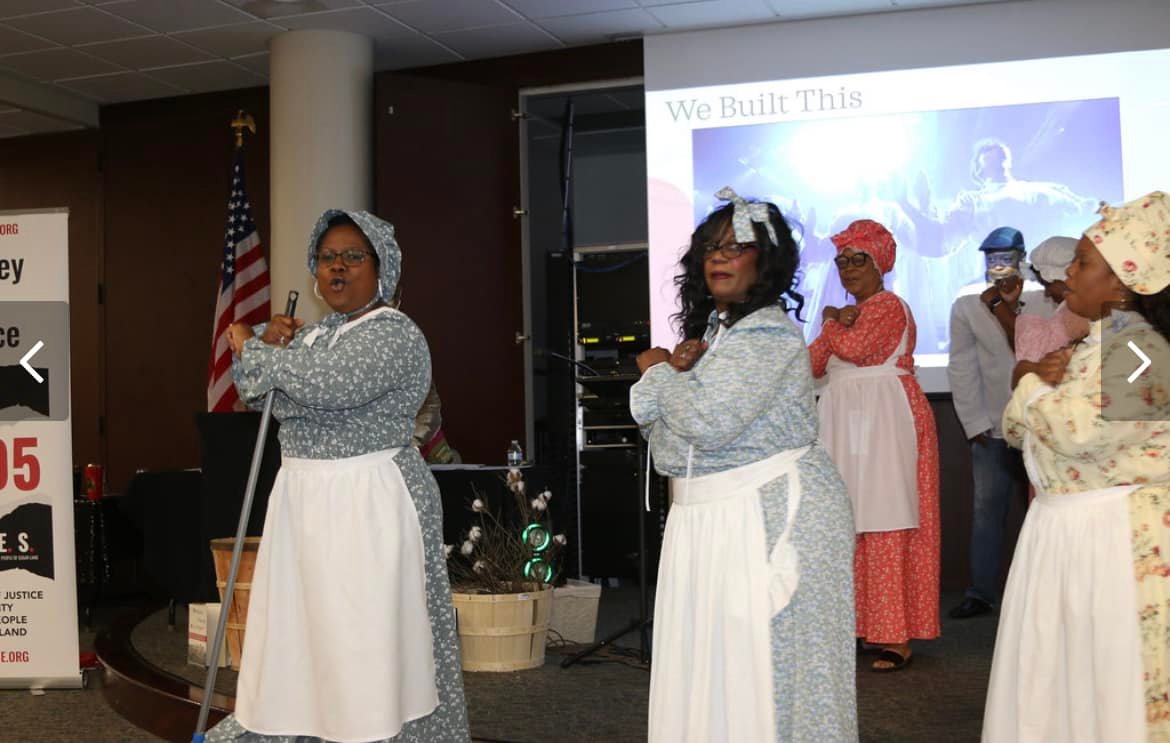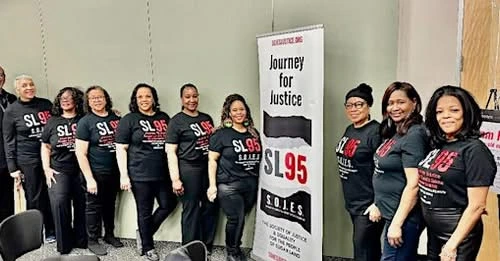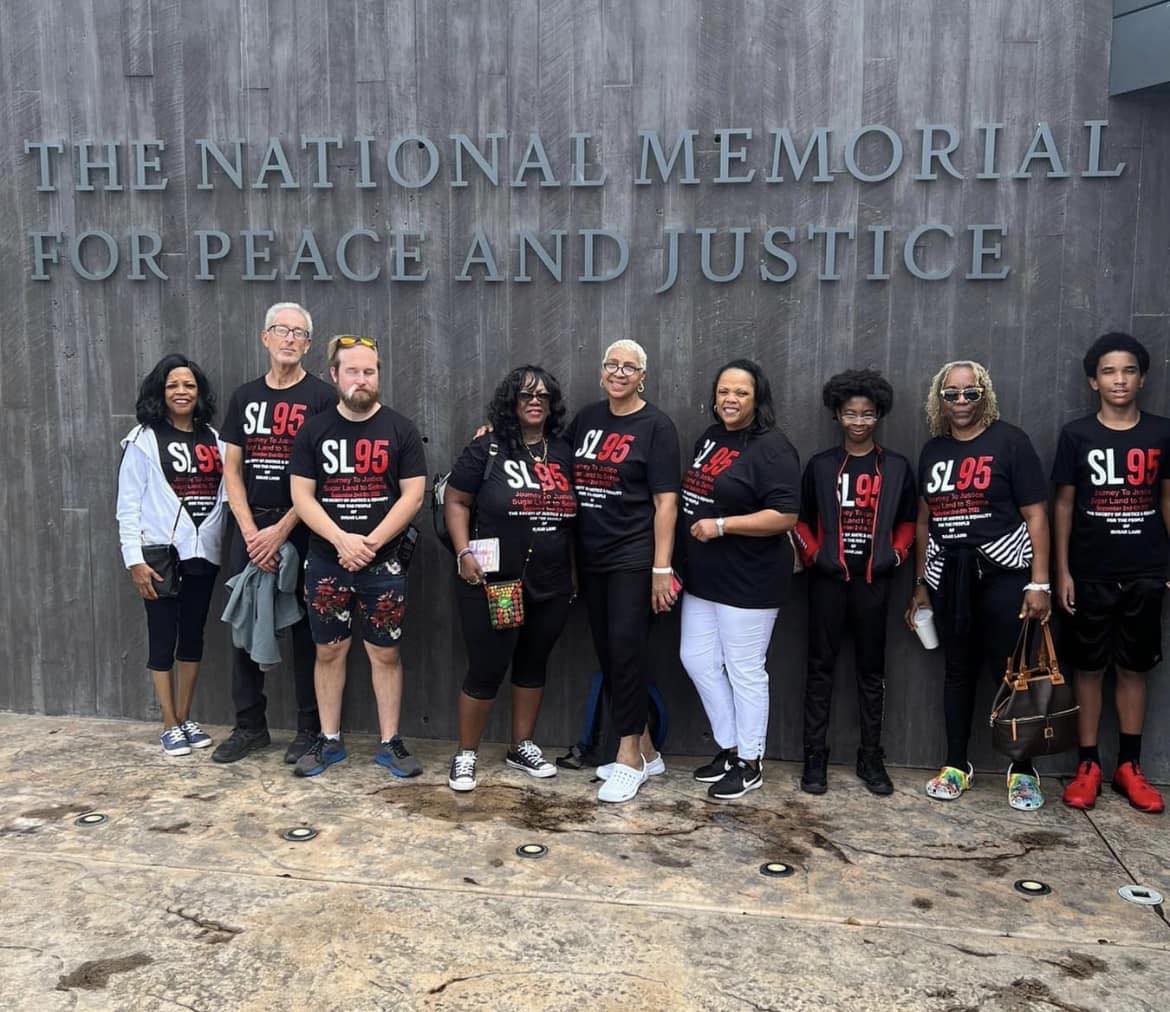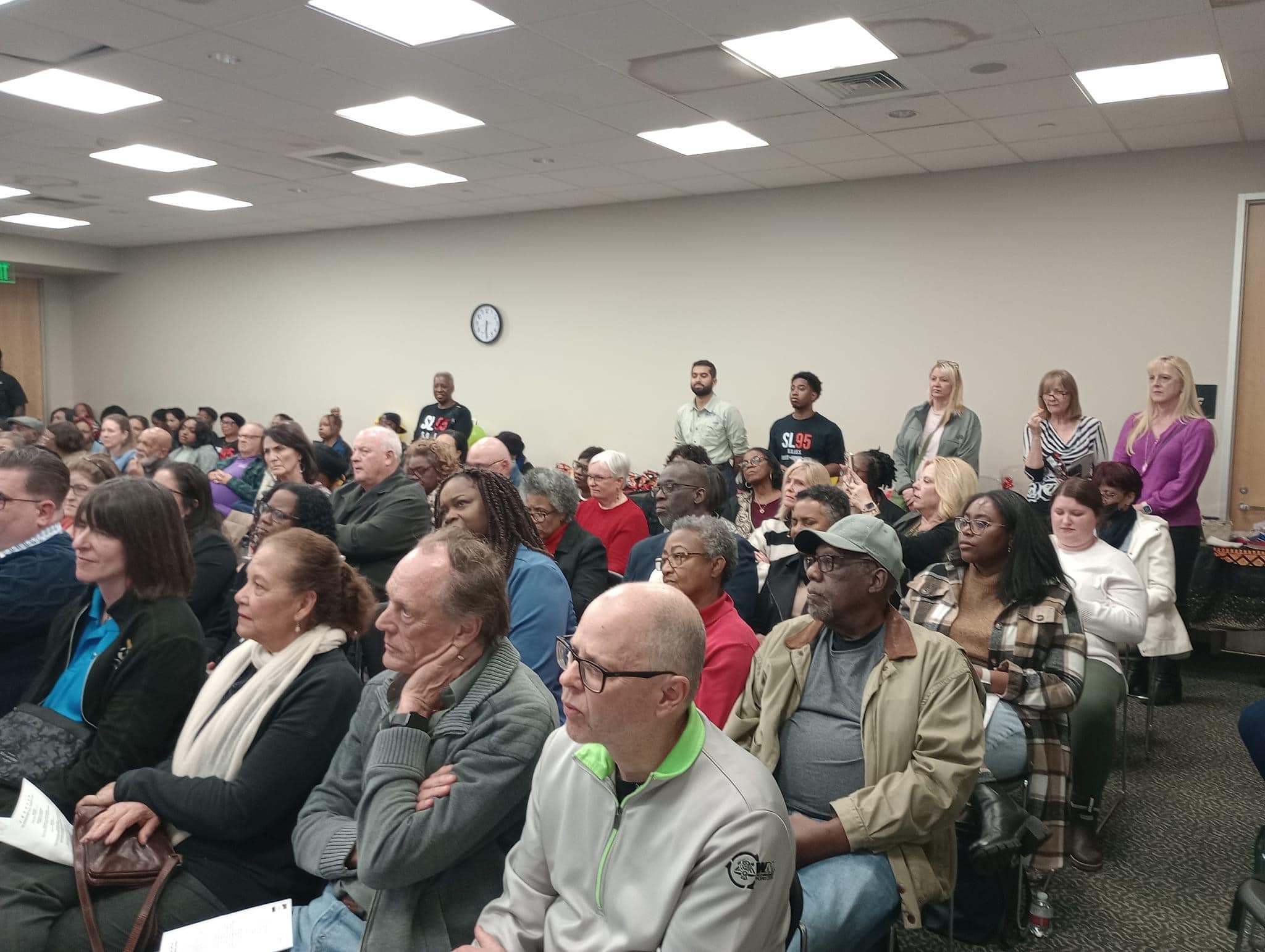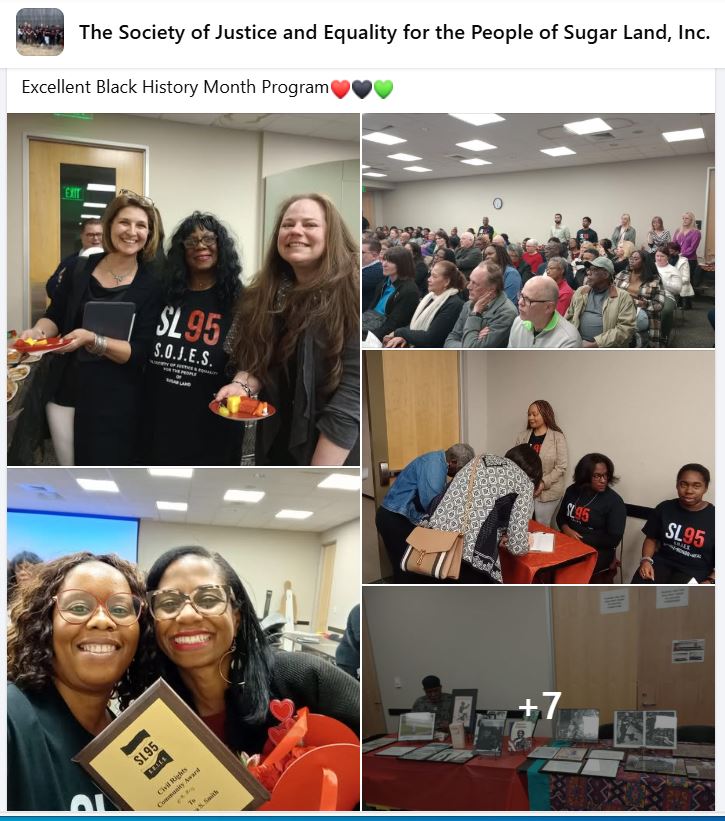Black Sugar, Not So Sweet The Untold Story of Sugar & Slavery & Convict Leasing in Sugar Land, Texas
Discover the hidden history of convict leasing and the role of sugar plantations in an era of forced labor. This digital exhibit brings the traveling panels to life, making them accessible to the world.
In May 2020, I learned from my friend and neighbor, Mr. Bruce Lemmie, about a harrowing discovery: the remains of 95 African Americans unearthed during the excavation of a career and technical school in Sugar Land. Deeply moved, I visited the burial site with my son, Kevin. What I saw left me heartbroken and angry—a neglected cemetery, overgrown with 12-16 inches of grass, with no fences, barriers, or markers to dignify the resting souls beneath the soil. Standing there, I felt compelled to act. I called my daughter, Raiquel, and together, we began charting a path forward. The vision was clear: to create a nonprofit organization dedicated to honoring these lives and educating the community through the establishment of a convict leasing museum in Sugar Land. Raiquel suggested reaching out to Mass Design in Boston, the team behind the impactful Legacy Museum in Alabama.
By September 2020, my children—Raiquel, Ryan, and Kevin—and I officially founded The Society of Justice and Equality For the People of Sugarland (SO JES), supported by a coalition of passionate community members. Their collective efforts laid the foundation for the progress we’ve achieved today.
We are especially grateful to key contributors, including Debra McGaughey, Ursela Knox, Bruce Lemmie, Paul Matthews, Farha Ahmed, Anna Lykoudis-Zafiris, Pastor David Sincere, and Destry Dokes. Our mission has also been uplifted by the steadfast support of local leaders and officials, including Commissioner Ken DeMerchant, Commissioner Grady Prestige, Congresswoman Lizzie Fletcher, Commissioner Dexter McCoy, State Representative Ronald Reynolds, and State Representative Dr. Suleman Lalani.
At SO JES, we believe that as a community, we must face the hard truths of our shared history of racial injustice. By acknowledging these truths, we illuminate the profound connections between the past and present, empowering us to build a future rooted in justice and equity. Our work is guided by the conviction that truth-telling is not only an act of honoring history but also a call to action—demanding meaningful change and fostering solutions to the racial and social injustices that persist today.
As you explore this virtual convict leasing museum, you will uncover the “untold story” that links sugar, slavery, convict leasing, and mass incarceration—beginning right here in Sugar Land. It is a history that is far from sweet, but one that urgently needs to be told.
We invite you to learn, reflect, and join us in our mission to amplify the voices of those who can no longer speak, and to seek justice for the generations past, present, and future
Panel 1
How many movies, books, museums show that sugar plantations were the worst of all the plantations because of their brutal nature on the lives of African Americans? How many people have heard about or seen in movies stories about the horrors of slavery and cotton plantations? Well. Did you know that MORE than 70% of every single African who was taken from their native land was brought to America, the Caribbean to work on sugar plantations.
Panel 2
Everyone thinks Cotton was what dominated the South. But we are here to tell you tonight that SUGAR was more POWERFUL and more IMPACTFUL and more DEADLY than Cotton, Tobacco, Corn and all other agricultural crops combined! The blood, sweat, and death of harvesting sugar cane contributed to the historical wealth and well being for Europeans in America and their entities.
Panel 3
So who lived in this area first?
Europeans? Mexicans? No! Native Americans!!
This land belonged to the Karankawa Indians, who were exterminated by Stephen F. Austin!!
The Karankawa dominated the Texas Gulf Coast.
They lived and fiercely protected their homeland. It was theirs.
But in came Austin….and nearly 300 European families that he brought in to take over this land.
And if those Europeans had enslaved people, they got more land!!
Remember-After the Civil War African Americans were supposed to get 40 acres and a mules? Well not only didn’t we get our land, Austin’s “old 300” got 80 acres for every enslaved African American! (shaking your head)…and the native people to this land? The Karankawa people…well…Austin decided that extermination of the Karankawa would be necessary, despite the fact that his first encounter with the tribe was friendly. There were many massacres. So sad that they were all Killed OFF..the Karankawa men, women and children. Read about the Skull Creek massacre which took place right here in 1823.
Panel 4
Look at this panel. Tell me the nationality of the people in this picture.
Believe it or not these were people of German descent
These were free thinking Germans who came to Texas for a better life.
Germans who refused to pledge allegiance to the confederate army
and because of that, they were lynched, their farms destroyed and
their homes burned.
The estimate was as high as 150.
No one knows for sure.
On August 10th 1862, confederate soldiers chased down 61 fleeing Germans,
killing 19 near the Nueces River. This event is known as the Nueces Massacre.
Many German bodies were left unburied until after the Civil War. In 1866, after
the war ended, a monument – Treue der Union (Loyalty to the Union) was built
to honor the lives of Germans who refused to join the Confederacy.
Panel 5
During the time of slavery, in Mississippi, there were these unfair laws called “pig laws”
This law provided that stealing “any hog, pig, shoat, cow, calf, yearling, steer, bull, sheep, lamb, goat or kid, of the value of one dollar or more” would be punished as grand larceny. This provision gave the statute its common name, the Pig Law; made the law notorious; and earned it a prominent place in the mythology of Mississippi backwardness.
After the Civil War since there was no more “free labor”, stealing a pig while black, meant you did hard time out in the field. This was the beginning of Mass Incarceration. Because of the loophole in the 13th Amendment to the Constitution which stated that African Americans were free except “as punishment for a crime”, a new form of slavery was formed. The pig laws were turned into “Black Codes”.
Panel 6
If you were unemployed, an orphan, out past curfew, stole something less than $20 dollars, couldn’t pay a fine, or other misdemeanor offenses, you could be arrested and sent to the prison farms right here in Sugar Land. The white prisoners who committed worst crimes, were sent to Huntsville to be inside of a cell and the black prisoners were sentenced to do hard labor out in the August sun to harvest sugar cane where they would die within 2 weeks to 6 months.
Over 2300 incarcerated African Americans were sentenced to the prison farms, railroads, and other industries right here in Fort Bend County, Texas. If One Died, They Just Ordered Another. Convict Leasing was worse than slavery.
Panel 7
The land owned by the Williams Brothers was eventually sold to B. F. Terry and William J. Kyle.
They eventually sold their sugar mill to Edward Cunningham and Littleberry Ellis (two evil men).
These men misused and leased out over 2300 convicted African Americans
This entire area was known as The Hellhole on the Brazos
New Territory Subdivision (where Kelly Rowland from Destiny’s Child, Scotty Pippen and Charles Barkley once lived) has parks and streets named after Cunningham and Ellis (not cool).
Satartia Middle School in New Territory is named after Ellis’s daughter.
Why are these men being honored after murdering so many African Americans used to build their wealth.
Panel 8
Profits, Prisons and Pain.
Cunningham and Ellis were greedy, evil men who gravely took advantage of the convict leasing system.
At one time they had every single African American convict in the state of Texas under their control (over 2300).
Where are all of those bodies?
Only 95 were found.
The average lifespan of a person who worked under Cunningham and Ellis’ harsh conditions was less than 2 years. And the average age was 20s.
The African American enslaved man worked under the hot and brutal Texas sun to build the Imperial Sugar Company, the railroad tracks as well as the City of Sugar Land. They died along the way.
May their living never be in vain.
Panel 9
Do you know that Sugar Has No Beneficial Use in the Body?
Sugar is a Chemical Compound similar in chemical structure to Cocaine.
The sugar cane from the bottom of the plant is a liquid that is used to make sugar crystals, molasses and rum. You had to know chemistry to make these end products.
African Americans working on a sugar cane plantation were skilled as:
Chemical Operators
Refinery Operators
Botanist
Mechanics
Electricians
QA/QC Technicians
They deserve recognition. They deserve credit. They deserve respect.
Black Sugar, Not So Sweet
Panel 11
Why was Convict Leasing Worse Than Slavery?
Because slaves were of value to their owner because they could sell them as merchandise.
However, No one “owned” convicted people.
They were worked and worked until they dropped in their tracks.
Convict Leasing was “one of the harshest, most exploitative labor systems in American history.
We all need to continue to advocate with S.O.J.E.S. The voice of the voiceless.
Panel 12
Many of the Sugarland 95 were born as free man (after 1865) over 154 years ago.
The discovery is not just a “Sugar Land” Texas story; this is an International story!
This discovery is the first of its kind in history.
As you will hear in the SOJES Podcast of the interview with the descendants, families wondered what happened to their loved one. Where did the men go who disappeared?
Convict leasing is still happening today.
Companies still use convicted people to grow their businesses. The State of California recently used convicted men as firefighters in Los Angeles for no pay.
The loophole is still in the 13th Amendment to the Constitution.
Panel 13
Special Thanks to the Honeyland Fund
Special Thanks to the SOJES Volunteers
Special Thanks to H-E-B
Special Thanks to the PRG scientists
Special Thanks to all our public officials
We Are The Voice of the Voiceless
May the lives of the Sugar Land 95 not be in vain!
Explore the Exhibit
Cotton May Have Been King, But Sugar Was The Kingdom
Sugar: The Driving Force Behind The Slavery
1820s Fort Bend County: Austin's "Old 300" - In, Indigenous People - Out
German Anti-slavery Sympathizers Were Lynched In Texas
Black Codes In South Re-Establish Slavery
Mass Incarceration Leads To Convict Leasing
1828: Fort Bend's Sugar Industry Begins
Profits, Prison And Pain
Making Sugar: A Not-So-Sweet Life
SUGAR: It's A Chemical Compound
Why Convict Leasing Was Worse Than Slavery
The Discovery Of The Sugar Land
SL95: 14 TO 70 YEARS OLD
What you will see in the Exhibit


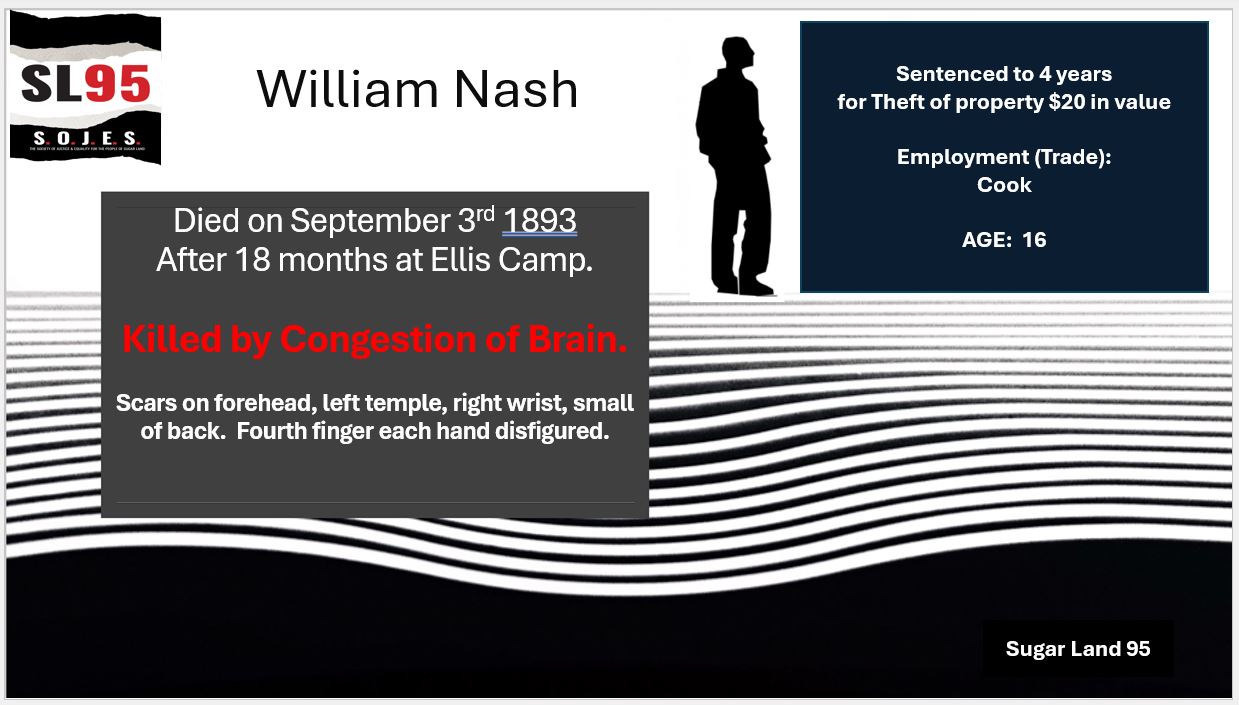




The Team
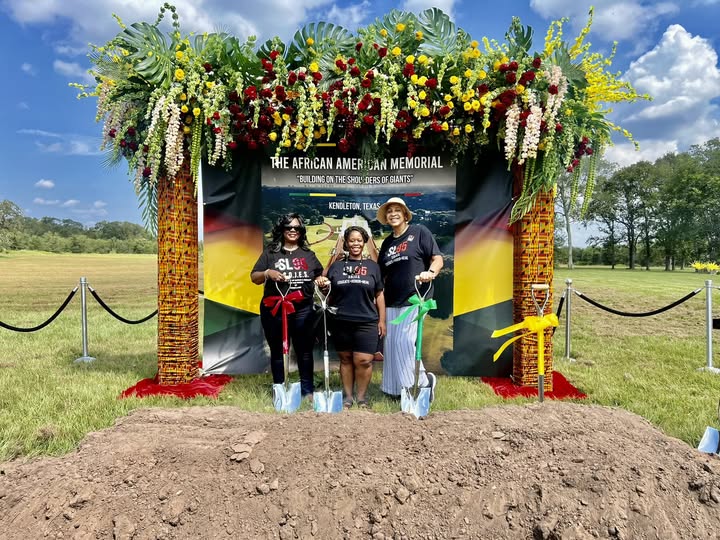
"Standing on the soil of the soon to be African American Memorial Park in Kendleton, Texas."

